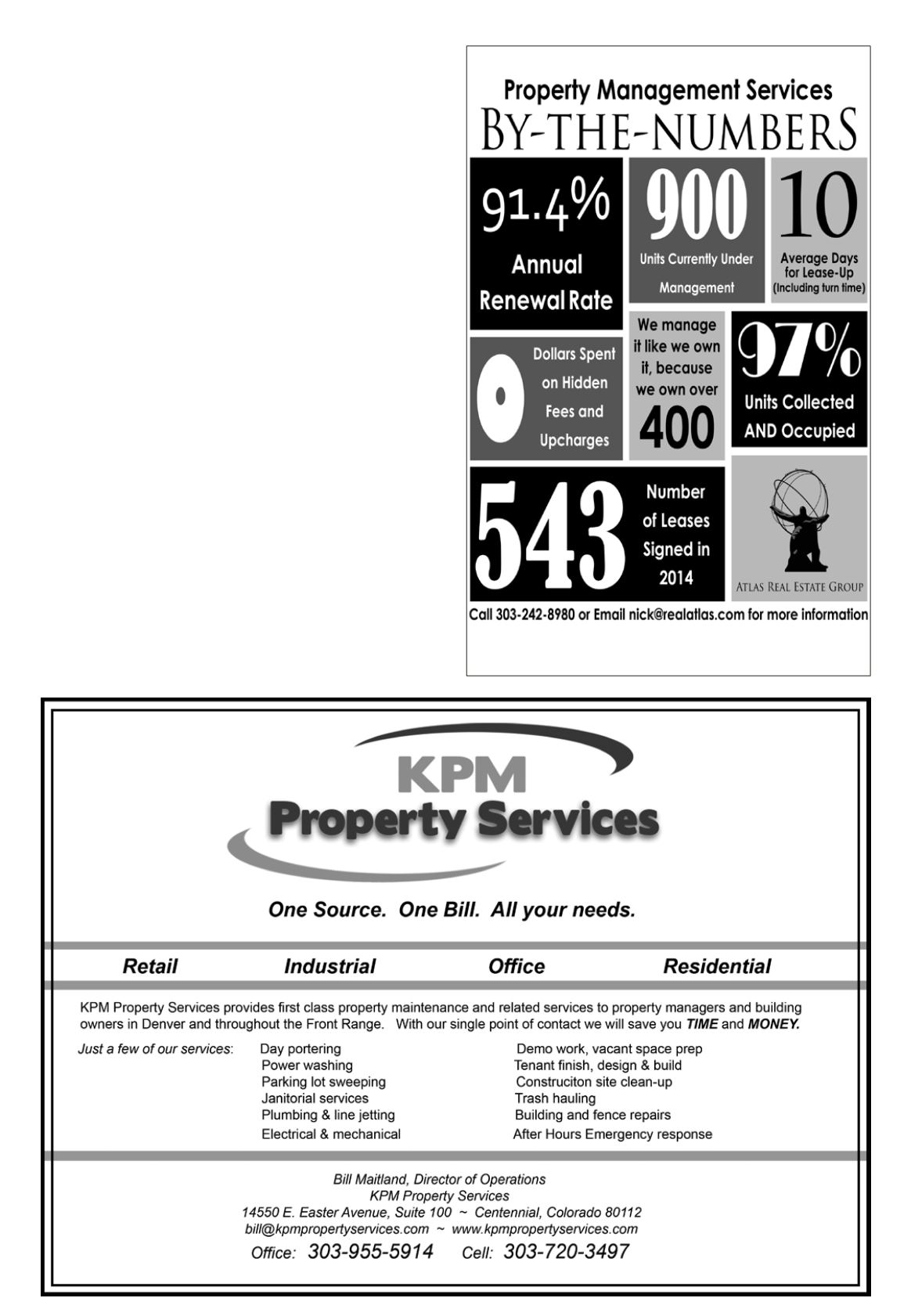

May 2015 — Property Management Quarterly —
Page 29
One new feature that is not marked on
the removal plan could make the dif-
ference between a property that is safe
and one that is open to risk when snow
or ice hits. Snowmanagement compa-
nies should create written plans for all
clients’ properties.These plans include
maps, backup strategies and policies
regarding client-specific requirements.
Just as spring and summer are work-
ing months for the snow companies, it
is also the time for property managers
to think about snow. Property manag-
ers must evaluate whether the plan
for the previous year worked as well
as it should have, whether there are
property risks that need to be alleviated
and whether they need to renegotiate
existing contracts or perform a vendor
search.
When it comes to planning for the
next year, here are four steps property
managers can take.
Performa post-seasonwalkthrough.
This is the physical walkthrough. It’s
important to bring along the previ-
ous year’s map with the high-priority
areas. As the manager walks through
the property, the map should either be
verified as accurate or corrected with
updated information. New sidewalks
should be marked, changes in parking
lots should be notated and high-priority
areas should be reviewed and verified.
This is also the time to address any
property damage incurred throughout
the course of the winter.
Post-season contractor evaluation.
This
is the time to go through the previ-
ous winter’s activities and determine
if the contractor met the contractual
obligations as required. Property man-
agers should ask if the contractor was
prepared, consistent and professional.
If not, then it is time to solicit new pro-
posals in order to find a vendor that is
a better fit.
This is also the time to make sure
the vendor choice is a proper fit and
meets the needs of the property owner.
Although some vendors may provide
the service as required, that doesn’t
mean those vendors are the best for
the property. Each vendor is unique and
the property owner should find the one
that provides the most benefits for the
residents or consumers of the property.
For the purposes of snow removal, the
goal of most property managers is to
find a vendor that can mobilize the
fleets quickly, respond to urgent needs,
keep the property safe and have a well-
trained crew that performs the duties
specified within the contract in a pro-
fessional manner.
Scope of work evaluation.
During
this phase the property manager
determines what type of work will
be required in the coming winter. For
example, if ice dams or roof snow
removal were not covered in the previ-
ous year’s work, it is probably a good
idea to add these into the contract for
the upcoming season. Each season
brings new lessons and during this
phase the lessons should be added to
the scope.
Contract evaluation.
In this stage the
property manager reviews the different
types of contracts available by the local
snowmitigation companies and picks
the one that best meets the defined
scope of work. Most mitigation com-
panies offer “per push” contracts, “per
event” contracts as well as “annual”
contracts. Understanding the difference
between these billing styles and their
unique advantages can help a property
manager meet budget requirements
while maintaining a high level of ser-
vice.
In the end, the property manager and
the snow and ice mitigation companies
have a lot to do during the hot summer
months. Not only do they have to think
about snow during 90-degree weather,
but also managers have to start pre-
paring for it. I would suggest taking a
fewminutes now to jot some notes
about your experience over the last six
months, then work your way through
the four steps.
s
















